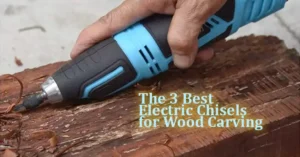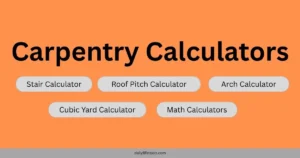You’re a student, teacher, artist, or carpenter, understanding how does an electric pencil sharpener work? It can help you choose the right model and maintain it effectively.
An electric pencil sharpener uses an internal motor to automatically rotate a blade that sharpens the pencil quickly and efficiently.
Here’s a step-by-step look at how it works:
- Insertion: When a pencil is inserted, a sensor or lever detects it and activates the motor.
- Motor Activation: The electric motor powers the sharpening mechanism.
- Blade Rotation: A steel blade (or dual blades for wood and graphite) rotates and grinds the pencil to a point.
- Shavings Collection: The shavings and graphite dust are collected in a compartment, which can be emptied.
- Automatic Stop: Some models include a mechanism to stop the motor once the pencil is properly sharpened.
- Ejection: High-end models may even automatically eject the pencil when done.
💡 Personal Experience: I’ve used dozens of electric sharpeners for my art pencils. The helical blade types last longer and offer consistent sharpness, especially great for Prismacolor pencils.
This article dives into the mechanics of electric pencil sharpeners, explains how does an electric pencil sharpener work for kids, and provides insights into the best models, maintenance tips, and comparisons with manual sharpeners.
Table of Contents
What is an Electric Pencil Sharpener?
An electric pencil sharpener is a motor-powered device designed to quickly and precisely sharpen pencils. It’s the grown-up version of the manual sharpener, but with gears, sensors, and blades that do the heavy lifting for you.
Do Pencil Sharpeners Matter?
Especially for artist-grade or carpenter pencils. Poor sharpeners can break leads or produce uneven points, frustrating users. For example, a user shared that a low-quality school sharpener “ate” their pencils, while a Fiskars manual sharpener proved reliable for Prismacolor pencils.
Quality sharpeners like X-ACTO or C.H. Hanson deliver consistent results without damaging pencils.
👦 How Does an Electric Pencil Sharpener Work for Kids?

Children approach electric pencil sharpeners with a mix of awe and mischief. So, how does an electric pencil sharpener work for kids?
Technically, the process is the same. But in reality, it’s a full-blown experience.
⚡ The Magical Moment
For kids, inserting a pencil and hearing that “whirrrrr” is like starting a mini rocket. My niece once said it was like “feeding the robot.” True story.
🧠 Teaching Moments
Electric sharpeners help children learn about:
- Cause and effect
- Simple mechanical systems
- Responsibility (yes, someone has to empty the shavings tray)
🔪 Safety Note
Many kid-friendly models come with auto-shutoff sensors or sealed blade chambers to prevent tiny fingers from getting hurt. Still, supervision is key.
👦 Kid Story: Back in my school days in New York, kids would unscrew manual sharpeners, extract the blades, and turn them into mini carving tools, for erasers, wood, even paper. True creative chaos. But electric sharpeners changed that, less danger, more learning.
Maintenance and Care for Your Electric Pencil Sharpener
Proper maintenance ensures your sharpener performs well. Here’s how to care for it effectively:
- Empty Shavings Regularly: Prevent jams by emptying the shavings tray after frequent use.
- Clean Blades: Use a small brush to remove graphite or wood residue from blades.
- Check Power Source: Ensure cords are intact or replace batteries as needed.
- Replace Blades: If the blades are dull, replace them per the manufacturer’s instructions.
A personal tip from experience: to sharpen a dull blade, use waterproof sandpaper (360–600 grit) on a glass surface with a few drops of oil. Secure the blade with a vise grip and slide it across the sandpaper, focusing on the angled edge.
This method, though time-consuming, restores sharpness and supports how an electric pencil sharpener works. by maintaining blade quality.
🛠️ How Do You Fix an Electric Pencil Sharpener?
First, stay calm. Then follow these steps:
- Unplug it or remove batteries.
- Remove the shavings tray—sometimes a jam is just from overfilling.
- Use a brush or an air duster to clean the blades.
- Check the pencil slot for stuck fragments.
- If it still doesn’t work, open the casing with a screwdriver and inspect the motor and gears (only if you’re confident).
🔧 Funny Fixing Tip: Once, I tried to repair one while listening to calming Zen music. It didn’t help the sharpener, but I felt at peace even when I ended up buying a new one.
🏆 Best Electric Pencil Sharpeners (2025 Picks)
🔹 X-Acto School Pro Electric Pencil Sharpener
- Helical blade
- Quiet, fast, and durable
- Ideal for classrooms
🔹 AFMAT Heavy Duty Sharpener
- Auto-stop function
- Can handle colored pencils
- Best for artists and pros
🏆 Best Carpenter Pencil Sharpeners
🔸 Irwin Tools Carpenter Sharpener
- Specifically made for flat carpenter pencils
- Fits snug in tool belts
Comparison: Electric vs. Manual Pencil Sharpeners
When deciding between electric and manual sharpeners, consider your needs. This comparison highlights the advantages of electric models, such as speed, consistency, and ease of use.
| Feature | Electric Sharpener | Manual Sharpener |
|---|---|---|
| Speed | Fast (3–7 seconds) | Slower (10–30 seconds) |
| Effort | Minimal, motor-driven | Requires hand cranking or twisting |
| Consistency | Uniform points, auto-stop features | Varies with user skill |
| Portability | Less portable, needs power | Highly portable, no power needed |
| Cost | $8–$65 | $1–$5 (Amazon) |
| Best For | Classrooms, offices, and heavy use | Artists, travel, precise control |
Electric sharpeners excel for speed and consistency, while manual ones offer control, as noted by artists who prefer knives for custom points (Jackson’s Art).
Can You Sharpen Pencil Sharpener Blades?
Yes, pencil sharpener blades can be sharpened, but it’s often more practical to replace them. To sharpen, remove the blade (unscrew or drill out rivets carefully) and use a whetstone or sandpaper (360–600 grit) to hone the angled edge.
Maintain the original angle to ensure how an electric pencil sharpener works. remains effective. However, repeated sharpening may alter the blade’s tolerance, requiring replacement. For most users, buying a new blade or sharpener is simpler (TechGearLab).
What Happens If You Put a Pencil in an Electric Sharpener?
When a pencil is inserted correctly, it activates the motor, sharpens to a point, and stops (if equipped with an auto-stop). If you apply constant pressure, the sharpener may over-sharpen, grinding the pencil down to the eraser.
A Brief History of Pencil Sharpeners
The journey of pencil sharpeners began in the early 19th century when pencils were sharpened with knives, a tedious process. In 1828, French mathematician Bernard Lassimonne patented the first pencil sharpener, using metal files to grind pencil tips (Wikipedia).
This design was improved by Thierry des Estivaux, who introduced a single blade in a conical housing, creating the prism sharpener still used today. By 1851, Walter K. Foster in the U.S. began mass-producing sharpeners, and electric models emerged around 1910, becoming widely available in the 1940s (TodayIFoundOut).
This evolution highlights the shift from manual to electric sharpeners, making how does an electric pencil sharpener work? a question rooted in decades of innovation.
💡 FAQs
❓How does an electric pencil sharpener work for kids?
It uses a motor to rotate blades and sharpen pencils. Safe models for kids include auto-stop and blade guards for protection.
❓Can you sharpen an electric pencil sharpener blade?
Yes, but it requires sandpaper, oil, and steady hands—or just replace the blade.
❓How do I fix a broken electric sharpener?
Start by unplugging it, cleaning out jams, checking power, and inspecting the motor. If needed, replace parts or get a new one.
❓Is an electric sharpener better than a manual one?
Yes, for speed and precision. Manual sharpeners are better for artistic control or on-the-go use.
🎯 Final Thoughts: Why You’ll Love Electric Pencil Sharpeners
Now you know exactly how does an electric pencil sharpener work and how does an electric pencil sharpener work for kids. Whether you’re an artist, a teacher, a parent, or someone who just loves the satisfying hum of a freshly sharpened pencil, these little machines make life smoother.
✏️ Last Tip: Choose one with auto-stop and replaceable blades. It’ll last longer—and save your pencils from over-sharpening doom.
Related Articles:
- The 6 Best Electric Pencil Sharpeners Forever
- How to Use an Electric Pencil Sharpener: 5 Proven Steps
- 5 Best Carpenter Pencil Sharpeners for Woodworkers in USA







